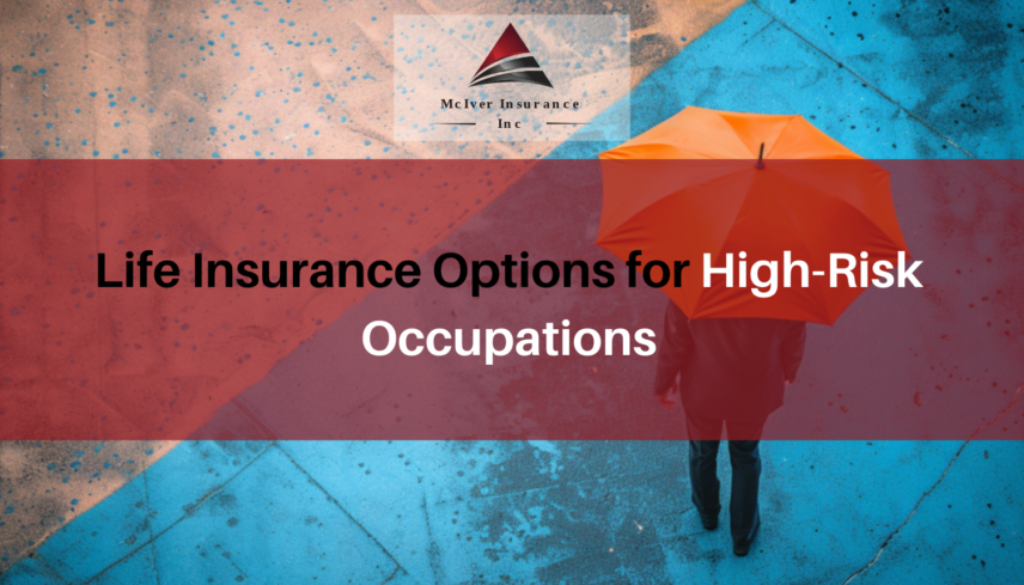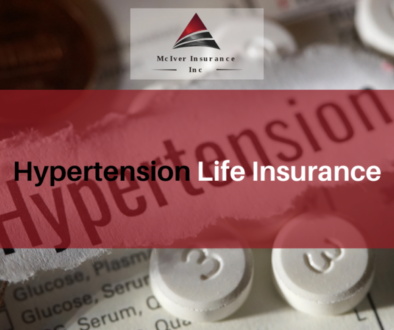Life Insurance Options for High-Risk Occupations
If you are in a profession where the likelihood of accidents, injuries, or fatalities is significantly higher and you have financial dependents that rely on your income, you need life insurance.
However, that is easier said than done.
In Canada, individuals in high-risk occupations such as construction, aviation, mining, or emergency services often encounter higher premiums, stricter eligibility requirements, or even coverage denials when seeking a life insurance policy, especially, if they don’t quite understand the life insurance landscape.
Luckily, we are here to help! Here is all you need to know about securing life insurance if you work in a high-risk occupation in Canada and have dependents.
Table of Contents
What Constitutes High-Risk Occupations in Canada?
In Canada, high-risk occupations include any jobs where individuals are exposed to hazardous conditions or environments that significantly increase the likelihood of injury, illness, or death.
Examples of such professions include:
- Construction Workers: Frequently exposed to heights, heavy machinery, and potential falls.
- Firefighters: Constant risk of burns, smoke inhalation, and structural collapses.
- Pilots: Face both physical and mental strain, especially in non-commercial flying.
- Loggers: Statistically one of the most dangerous jobs, involving heavy equipment in remote areas.
- Oil and Gas Workers: High-risk due to the potential for explosions, chemical exposure, and accidents in isolated locations.
A 2022 report by The Association of Workers’ Compensation Boards of Canada (AWCBC) highlights annual fatalities and injuries in high-risk Canadian industries:
| Occupation | Annual Fatalities | Reported Injuries |
| Construction | 221 | 29,850 |
| Agriculture/Forestry | 102 | 11,400 |
| Mining & Quarrying | 19 | 2,300 |
| Aviation | 10 | 870 |
| Emergency Services | 67 | 3,500 |
As seen in the table, construction, forestry, and emergency services are the three occupations with the highest fatality and injury rates.
If you work in any of the above high-risk occupations you likely need robust life insurance protection.
Understanding The Underwriting Process
How do insurance providers determine how much premium you pay for your life insurance policy?
They do so through an underwriting process where an insurer will assess your level of risk by evaluating your medical history, lifestyle choices, and profession.
Depending on the provider, you may be asked to provide detailed information about your job, including the nature of your work, the environment you operate in, and any safety measures your company has in place.
Underwriters will use this information to calculate your potential liability.
If you work in a high-risk occupation, have poor health, or have questionable lifestyle choices the risk and potential liability for the insurer increases – resulting in higher premiums or limited policy options due to the increased likelihood of claims.
Why Pay Higher Insurance Premiums and Additional Costs?
If you work in a high-risk occupation your annual premiums will likely be higher than those with lower-risk jobs.
While it can be painful to pay higher premiums, life insurance can provide financial protection to your loved ones in case of the unexpected, and give you much-needed peace of mind.
Many Canadians working in high-risk occupations are also guilty of overestimating the cost of premiums they would have to pay for adequate coverage.
In many cases, depending on your occupation and the company you work for, your premium cost may only be slightly higher than someone working a desk job.
This is because the most common method insurers use when adjusting premiums for high-risk occupations is a “flat extra” charge.
This flat extra charge is an additional amount charged per $1,000 of coverage. For example, a pilot may be assessed a flat extra of $2 per $1,000 of coverage, meaning they would pay an extra $200 annually on a $100,000 policy.
When you consider the additional risk, paying an extra $100-$200 annually is well worth it to ensure your family’s financial security. Won’t you say so?
Thus, instead of assuming premiums will be too high, shop around or speak to a trusted insurance broker. You will be surprised by the options and affordability of some of the life insurance policies you can find!
Types of Life Insurance Available for High-Risk Occupations
Individuals in high-risk occupations can choose from several types of life insurance, depending on their needs and budget:
- Term Life Insurance: Provides coverage for a specific period (e.g., 10, 20, or 30 years) and is often the most affordable option.
- Whole Life Insurance: Offers lifetime coverage with a savings component, making it more expensive than term insurance but with added financial benefits like cash value accumulation.
- Universal Life Insurance: Combines life insurance with an investment component, allowing for flexibility in premiums and death benefits.
- Specialized Policies for High-Risk Occupations: Some insurers offer policies specifically designed for high-risk individuals, such as Accidental Death and Dismemberment (AD&D), which provides benefits in case of death or serious injury due to an accident, often at a lower cost than traditional life insurance.
Choose the Right Policy – Consult with Trusted Insurance Brokers
Figuring out the best life insurance policy for you and your family depends on accounting for several factors, such as:
- Coverage Amount: Calculate how much coverage your dependents will need to cover living expenses, debts, and long-term financial goals if something happens to you.
- Policy Type: Consider whether you need the affordability of term life insurance or the long-term benefits of whole or universal life.
- Premium Affordability: Find the right balance between coverage and cost.
- Insurer Specialization: Look for insurance providers specializing in life insurance for high-risk occupations. These providers can potentially offer more competitive rates and better coverage options.
At McIver Insurance our expert advisors can help assess your financial situation, compare policies from different insurers, and guide you toward the most suitable policy based on your professional risks.
Call now to book a no-obligation consultation!
FAQs
Q) What is considered a high-risk occupation in life insurance terms?
Any job that has a higher likelihood of injury, illness, or death compared to the average occupation is considered high-risk and results in increased premiums or limited coverage.
Q) What life insurance policies are most suitable for high-risk professionals?
Term life insurance and specialized policies like Accidental Death and Dismemberment (AD&D) are often the most suitable options for high-risk professionals. These policies offer coverage tailored to occupational risks.
Q) Can I get life insurance if I have a high-risk job but good health?
Yes, you can get life insurance with a high-risk job if you have good health, but your premiums may be higher due to the occupational risks.



